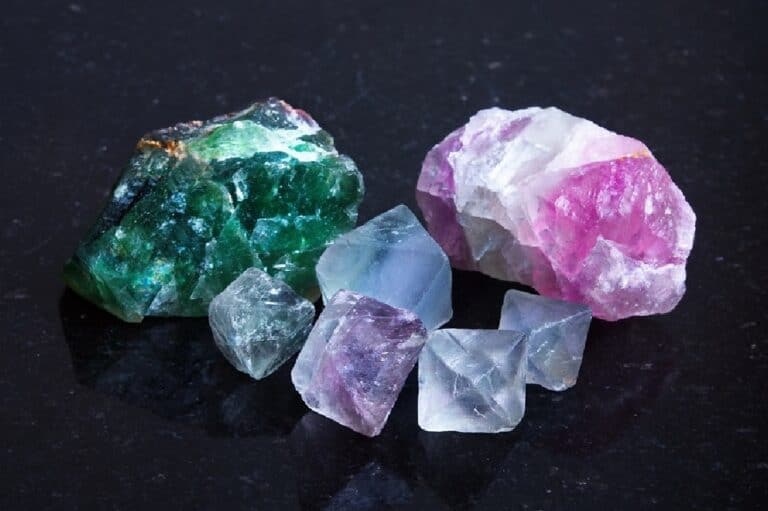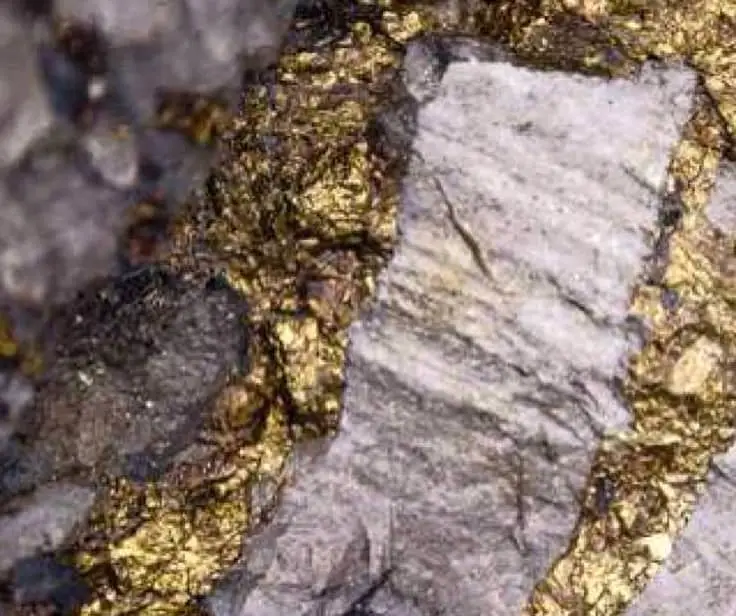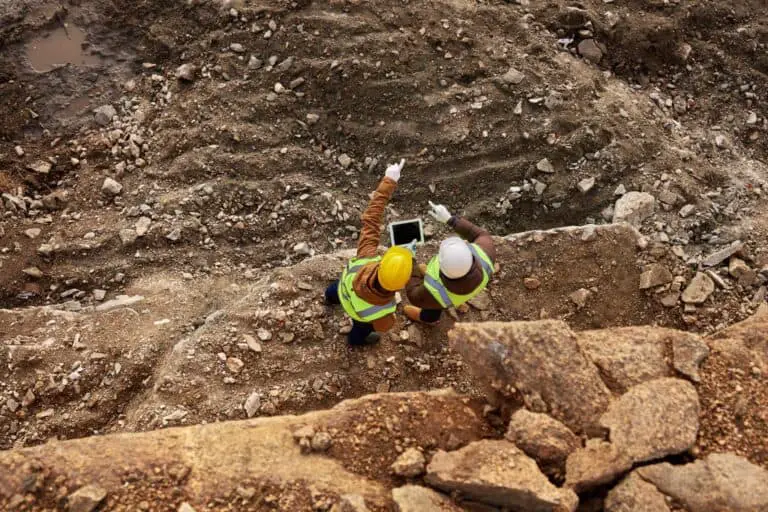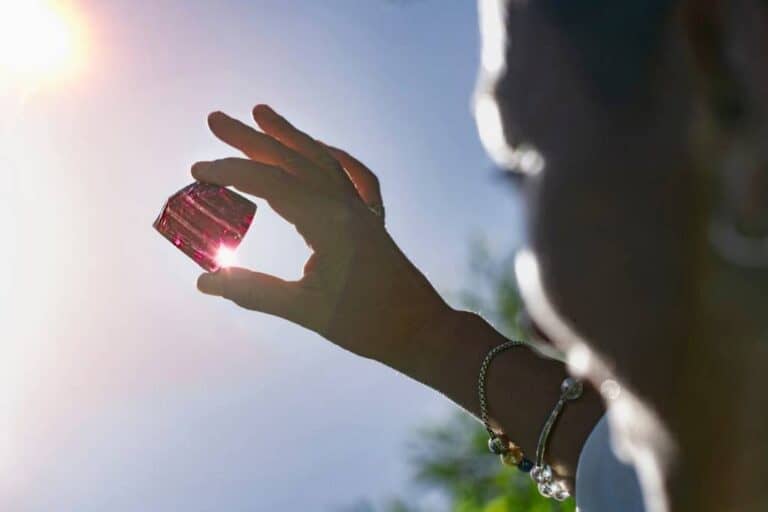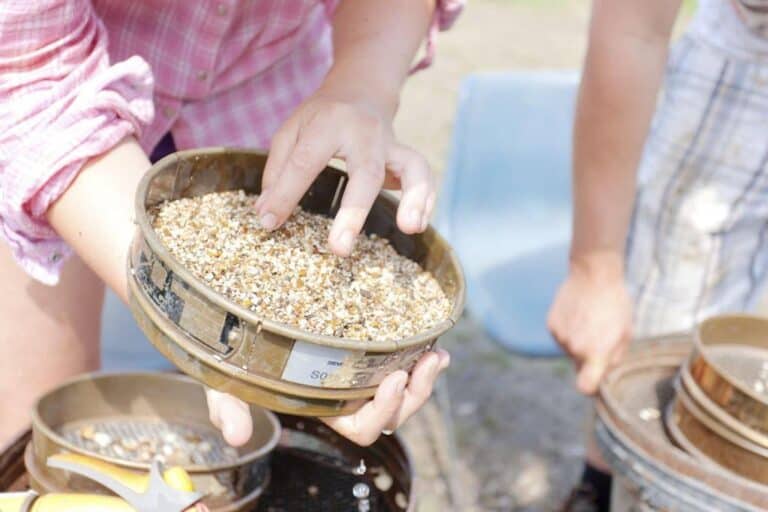Why Is Obsidian or Volcanic Glass Not Considered a Mineral? The Glassy Truth

When we think of minerals, we often picture hard, crystalline substances like diamonds, quartz, and calcite. However, not all naturally occurring materials with a uniform chemical composition are considered minerals.
Obsidian, a type of volcanic glass, is one such substance that is often excluded from the mineral category , despite its geological importance.
In this article, we’ll explore why obsidian is not considered a mineral and delve into some of the unique properties of this fascinating material. In addition to that, we’ll learn what sets them apart from true minerals, and the implications of this distinction for geologists and mineralogists.
What are Minerals?
To understand why obsidian and volcanic glass are not minerals, it’s essential to first define what a mineral is. A mineral is a naturally occurring inorganic substance with a specific chemical composition and crystalline structure. In other words, minerals are solid materials that occur naturally and have a specific atomic arrangement. Some of the key characteristics of minerals include:
- Crystallinity: Minerals have a crystalline structure, meaning that their atoms are arranged in a regular, repeating pattern.
- Inorganic Origin: Minerals are not produced by living organisms, but rather by geological processes such as crystallization, precipitation, or solid-state diffusion.
- Chemical Composition: Minerals have a specific chemical formula, meaning that they are composed of specific elements in specific proportions.
- Physical Properties: The atomic structure and chemical composition of minerals determine a variety of physical properties, such as hardness, color, luster, cleavage, and density.
Characteristics of Obsidian and Volcanic Glass
Both obsidian and volcanic glass are amorphous (non-crystalline) materials that are the result of volcanic activity. Obsidian is a dark-colored, naturally occurring glass that forms when lava cools rapidly, preventing the atoms from forming a crystalline structure.
It has a smooth, shiny texture and can range in color from black to brown, green, or red. On the other hand, the term “volcanic glass” is more general and encompasses all non-crystalline materials created by volcanic activity. It includes materials such as pumice, tuff, and hyaloclastite.
Why is Obsidian not a Mineral?
The main reason that obsidian is not considered a mineral is that it lacks a crystalline structure. Remember, one of the defining characteristics of a mineral is that it has a specific atomic arrangement that results in a crystal lattice structure. Obsidian does not have this kind of structure because it cools too quickly for crystals to form.
Additionally, while obsidian has a uniform chemical composition, it can vary in composition depending on the source of the lava. This means that obsidian from one location may have a slightly different chemical composition than obsidian from another location. Minerals, on the other hand, have a specific chemical formula that is the same no matter where they are found.
Unique Properties of Obsidian
While obsidian may not be a mineral, it is still a fascinating material with many unique properties. Here are a few of them:
1. Glassy Texture
Obsidian’s smooth, glassy texture is one of its most distinctive features. This texture is a result of the rapid cooling process that the lava undergoes. Unlike other volcanic rocks, which have a rough or jagged texture, obsidian is incredibly smooth to the touch.
2. Sharpness
Obsidian is one of the sharpest substances known to man. In fact, it has been used to create some of the sharpest blades and arrowheads in history. This is because obsidian fractures in a way that creates incredibly sharp edges. These edges can be honed to an incredibly fine point, making obsidian an ideal material for cutting and slicing.
3. Unique Colors
Obsidian can come in a variety of colors, from black to brown to green. These colors are a result of the different minerals and impurities that are present in the lava when it cools. Some types of obsidian, such as rainbow obsidian, even have a colorful sheen or iridescence to them.
4. Healing Properties
In some cultures, obsidian is believed to have healing properties. It is thought to help alleviate pain, improve circulation, and reduce inflammation. Some people even carry a piece of obsidian with them as a good luck charm or to promote positive energy and spiritual well-being.
5. Volcanic Origin
Obsidian is a volcanic glass, which means it is formed from lava that has cooled quickly without crystallizing. This makes obsidian a unique material that is often associated with volcanic activity. Obsidian is commonly found near or within volcanic areas and can provide clues about the geological history of a region.
6. Low Water Absorption
Unlike many other types of rock and mineral, obsidian has a very low water absorption rate. This means that it does not absorb moisture easily, which can make it a valuable material in construction and other applications where moisture resistance is important.
Uses of Obsidian
While obsidian may not be a mineral, it has been used for a variety of purposes throughout history. Here are just a few of the ways that obsidian has been utilized:
1. Tools and Weapons
Obsidian’s sharpness and ability to be honed to a fine point have made it a valuable material for creating tools and weapons. In ancient times, obsidian was used to make knives, arrowheads, and other cutting implements.
2. Jewelry
Obsidian’s unique colors and glassy texture make it a popular material for jewelry. It is often used to create beads, pendants, and other decorative pieces.
3. Construction
Obsidian’s low water absorption rate and durability make it a valuable material for construction. It has been used in the past to create walls, floors, and other structures.
4. Spiritual and Healing Practices
Obsidian is often used in spiritual and healing practices. Some people carry a piece of obsidian with them as a good luck charm or to promote positive energy and spiritual well-being.
Conclusion
Obsidian may not be considered a mineral, but it is still a fascinating material with unique properties and a rich history of use. While it lacks a crystalline structure, obsidian’s glassy texture, sharpness, and wide range of colors make it a valuable material for many applications, from tools and weapons to jewelry and construction. And its association with volcanic activity provides insight into the geological history of the regions where it is found. Overall, obsidian may not fit neatly into the category of minerals, but it remains a captivating substance that continues to intrigue and inspire us.

